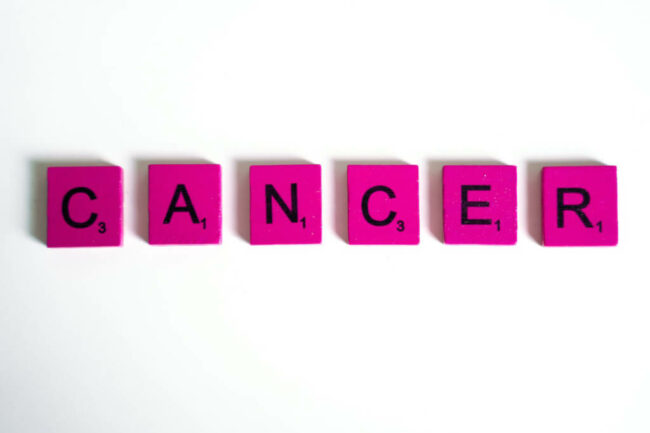Cancer causes cells to split maniacally. This can arise as tumors, harm to the immune system, and other impairments that, if left untreated, can be fatal. In this blog entry, we look at the different types of cancer, discuss how the disease progresses, and discuss the various treatment options that greatly boost survival rates and quality of life for people with cancer.
What Exactly is Cancer?
Cancer is a very general term. It is a term used to refer to the disease that develops as a consequence of cellular changes that lead to the unregulated division and expansion of cells. The progression of some forms of cancer results in accelerated cell growth, while other types of cancer cause cells to grow and divide at a more gradual pace. While some types of cancer, like leukemia, do not result in the development of visible growths called tumors, other types of cancer do.
The Vast Majority of Cells in the Body Are Specialized and Have Predetermined Lifespans
A phenomenon known as apoptosis is both normal and advantageous, even though the death of cells may have the appearance of a negative event. A cell will be instructed to die so that it can be replaced by a newer cell in the body that will perform its functions more effectively. Cancerous cells are missing the components that tell them to stop dividing and to die when they reach a certain age.
As a consequence of this, they accumulate within the body, consuming the oxygen and nutrients that would normally be used by the body to nourish other cells. Cancerous cells have the potential to form tumors, weaken the immune system, and cause other changes that interfere with the body’s ability to perform its normal functions. Cancerous cells can begin in one location, then spread to other areas via the lymph nodes. These are groups of immune cells that can be found in various parts of the body.
Causes
Cancer can be caused by a wide variety of factors, some of which can be avoided. According to data that was collected in 2014, for instance, smoking cigarettes is responsible for the deaths of more than 480,000 people in the United States each year. In addition to smoking, the following are also considered to be cancer risk factors:
- Excessive use of alcoholic beverages
- Extra fat on one’s body
- Inactivity in physical pursuits
- Poor nutrition
Other Factors That Can Lead to Cancer Cannot Be Avoided
Age is currently the most important factor that cannot be avoided as a risk factor. The American Cancer Society reports that medical professionals in the United States diagnose 87% of cancer cases in patients who are 50 years of age or older.
Can Cancer Be Inherited?
There is some evidence that genetic factors play a role in the development of cancer. The genetic code of an organism instructs cells how often to divide and when they should die. Alterations in the genes can cause malfunctioning instructions, which can then lead to the development of cancer.
Additionally, genes affect the production of proteins within cells. Proteins are responsible for transporting many of the instructions necessary for the growth and division of cells. The proteins that would normally repair damaged cells can be altered by certain genes. This may eventually result in cancer. A parent can pass on the altered instructions to their children if that parent carries these genes.
Some of the body’s genetic material can change after birth, including in ways that can be determined by behaviors and environmental influences like smoking and sun exposure. Other changes that can result in cancer take place in the chemical signals that determine how the body deploys, or “expresses,” particular genes. These changes take place in the chemical signals that determine how the body deploys specific genes.
Last but not least, a predisposition to particular cancer can be passed down through families. A cancer syndrome that runs in families is what a physician might call this condition. It is estimated that inherited genetic mutations are responsible for the development of between 5 and 10% of all cases of cancer.
Treatments
One of the negative aspects of chemotherapy treatment is hair loss. However, there has been progressing made in treatment, which is improving the prognosis for people who have cancer. New medicines and treatment technologies have been made possible by pioneering research that has led to their development.
Treatments are typically prescribed by physicians with consideration given to the type of cancer, the stage of cancer at the time of diagnosis, and the individual’s general state of health. The following is a list of examples of different cancer treatment approaches:
- The goal of chemotherapy is to eradicate cancerous cells by administering drugs that specifically target rapidly dividing cells. The medications have the potential to reduce the size of tumors, but they can also cause severe side effects.
- Taking medications that alter the way certain hormones function in the body or interfere with the ability of the body to produce them is what is known as hormone therapy. It is common practice to take this approach in cases where hormones play a significant role, such as in prostate and breast cancers.
- Immunotherapy is the practice of using drugs and other types of treatment to stimulate the body’s immune system and encourage it to fight cancerous cells. Checkpoint inhibitors and adoptive cell transfer are two examples of treatments that fall into this category.
The field of precision medicine, also known as personalized medicine, is relatively new and still in development. It entails carrying out genetic testing to establish which treatments are most effective for a person’s particular manifestation of cancer. However, researchers have not yet demonstrated that it is an effective treatment for any form of cancer.
High doses of radiation are used in radiation therapy to eradicate cancerous cells. In addition, a physician might suggest undergoing radiation treatment to reduce tumor-related symptoms or to shrink a tumor before surgical removal.
Cancers of the blood, such as leukemia and lymphoma, are often well-suited candidates for stem cell transplantation because of their aggressive nature. The procedure involves the removal of cells, such as red or white blood cells, that have been destroyed by chemotherapy or radiation. The cells are then fortified by lab technicians, who insert them back into the patient’s body.
When a patient has a cancerous tumor, surgery is frequently part of the treatment plan that they will undergo. In addition, lymph nodes may be removed by a surgeon to stop or slow the spread of the disease.
Targeted therapies carry out their anti-proliferative functions within cancerous cells, where they are most effective. They also can strengthen the immune system. Small-molecule drugs and monoclonal antibodies are two types of treatments that fall into this category. To achieve optimal results, many times medical professionals will combine different kinds of treatment.
Types
The risk of developing a wide variety of cancers is increased when a person smokes.
According to the National Cancer Institute, breast cancer is the most prevalent form of the disease in the United States, followed by cancers of the lung and prostate. Non-melanoma skin cancers were not included in these statistics because they were not considered a type of cancer.
More than 40,000 people in this country are given a diagnosis with cancer every year, and among those, the most common types are as follows:
- Cancer of the kidney, bladder, colon, and rectal, as well as endometrium.
melanoma of the liver non-lymphoma - Hodgkin’s of the liver
- Pancreatic
- Thyroid
- The frequency of the other forms is lower
According to the National Cancer Institute, there are more than one hundred different types of cancer.
Cancer Development and Cell Division
Oncologists categorize cancer according to:
- Where in the body it is located, as well as the tissues in which it forms.
To give one example, sarcomas can arise in either bones or soft tissues, whereas carcinomas can develop in cells that cover either the internal or external surfaces of the body. Skin cancers called basal cell carcinomas and breast cancers called adenocarcinomas can both develop over time. The process by which cancerous cells spread to other areas of the body is referred to as metastasis in the medical field. Additionally, a single patient can have multiple forms of cancer at the same time.
Outlook
A year-on-year reduction in the number of cancer diagnoses and deaths can be attributed to several factors, including advances in cancer detection, increased awareness of the dangers of smoking, and a subsequent reduction in the use of tobacco products. The death rate due to cancer as a whole fell by 26 percent between 1991 and 2015, according to the American Cancer Society (American Cancer Society). The prognosis for a person who has been diagnosed with cancer depends on whether or not the disease has spread, as well as the type, severity, and location of cancer.
Takeaway
Cancer causes cells to divide uncontrollably. Additionally, it stops them from expiring at the stage of their life cycle that would normally be fatal to them.
Both hereditary predisposition and lifestyle factors, such as smoking, can play a role in the progression of the disease. DNA’s ability to communicate with cells and to control when and how cells divide and die is influenced by several different elements. Breast cancer is the second most common type of cancer in the United States, after nonmelanoma skin cancer. On the other hand, lung cancer is the most common type of cancer to result in death.
The treatments are consistently getting better. Chemotherapy, radiation therapy, and surgery are some examples of contemporary treatment modalities. Some individuals find that more recent treatment options, such as stem cell transplantation and precision medicine, are beneficial to their health. Cancer is being diagnosed in fewer people each year, which has a positive impact on survival rates.



